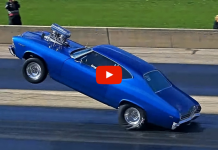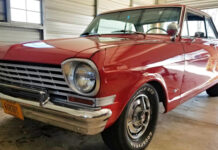Efficient driving is the key to unlocking your vehicle's full potential while saving some serious dough on gas. It's not just about getting from point A to point B; it's about making the journey smoother, safer, and more cost-effective. Trust me, your wallet and the environment will thank you for it!
In this article, we're gonna dive into 7 rad driving techniques that'll make you a master of fuel efficiency in no time. Each technique is designed to help you get the most out of every drop of gasoline, without sacrificing the thrill of the ride. So buckle up, my friend, and let's get this show on the road!
We'll explore the science behind each technique, as well as share some personal experiences and opinions on why they work so well. By the end, you'll be itching to hit the road and test out these gas-saving tips for yourself! Let's get started, shall we?
14 Fuel-Saving Driving Hacks
Let's face it, we all want to save some bucks on gas these days, especially with prices jumping around like crazy. I've got your back! Here are some fantastic tips for driving efficiently, so you can watch those savings pile up while you save on gas.
Tip #1: Avoid the Heavy Foot
Slamming that accelerator is a surefire way to waste fuel. The harder you hit it, the more gas you'll burn through. Be gentle on the pedal to conserve fuel and embrace efficient driving. Aim for a smooth 5-second acceleration from a stop to 15 mph. For manual transmissions, stick to a moderate throttle position and shift between 2000 and 2500 rpm. By doing this, you'll save gas while driving.
Here's a neat trick to avoid accelerating too fast: picture an egg under the gas pedal. When you step on it, imagine the pedal is pressing down on that fragile egg. This mental exercise can help you accelerate safely, which translates to fuel-efficient driving techniques.
Tip #2: Maintain Consistency for Fuel-Efficient Driving
Ever wondered why there's a difference in mileage between city and highway driving? Take a look at traditional gas-powered cars and you'll notice that highway driving always bags better mileage. For example, the Corolla's EPA-estimated MPG is higher for highway driving compared to city driving. By following tips for fuel economy, you can improve your mileage.
This discrepancy comes down to fluctuations in speed. Sudden drops in speed paired with quick acceleration can boost your fuel consumption by up to 30% on highways. That's why stop-and-go driving hurts fuel efficiency. So, when you're not in the city, try to minimize abrupt starts and stops. Apply these gas-saving tips for cars and watch your fuel efficiency soar.
Cruise control is a fuel-saving lifesaver for long commutes or road trips on the highway. Not only does it save gas, but it also helps keep your car running smoothly. Just remember to follow the road signs and disengage cruise control when you're faced with hazardous driving conditions.
Tip #3: Stay Sharp and Maintain a Safe Distance
Preserve your car's momentum by planning your moves in advance. Keep an eye on the road ahead, anticipate pedestrians and other drivers' actions, and stay a safe distance behind the car in front of you. This is one of the most important fuel-efficient driving techniques.
Not sure what's considered a safe distance? Try the counting method: pick a stationary object like a road sign or marker when you're driving. Watch the car ahead of you pass the object, then start counting. While this used to be called the "2-second rule," it's now understood that different count times are needed for varying driving conditions.
For speeds between 35-55 mph, maintain a 3-second distance. Count 4 seconds for speeds between 55-75 mph, and during rain, wet roads, or heavy traffic. In snowy or icy conditions, keep a 7-8 second distance for a safer ride. This counting trick can help you maintain the right distance and improve your gas mileage.
Many Toyota vehicles come equipped with Dynamic Radar Cruise Control. This active safety feature is designed to detect the car in front of you, automatically adjusting your speed to maintain a safe following distance. Remember these fuel-efficient driving tips for a better ride!
Rev Up Your Efficiency to Fuel-Saving Mastery
In the end, efficient driving is not just a concept, but a lifestyle. Embracing these 14 techniques will not only help you save gas but also make a positive impact on the environment. After all, we car enthusiasts have a responsibility to keep our rides in tip-top shape!
Remember that practice makes perfect, so don't be discouraged if you don't see immediate results. Stick to these techniques, and soon enough, you'll be a master of fuel efficiency. Drive safe and smart, my friend, and let's leave a better world for future car lovers!
Keep cruisin', exploring, and sharing your experiences with fellow enthusiasts. Let's spread the word about the benefits of efficient driving and enjoy the open road together. Cheers to more miles per gallon and a lifetime of unforgettable drives!






















